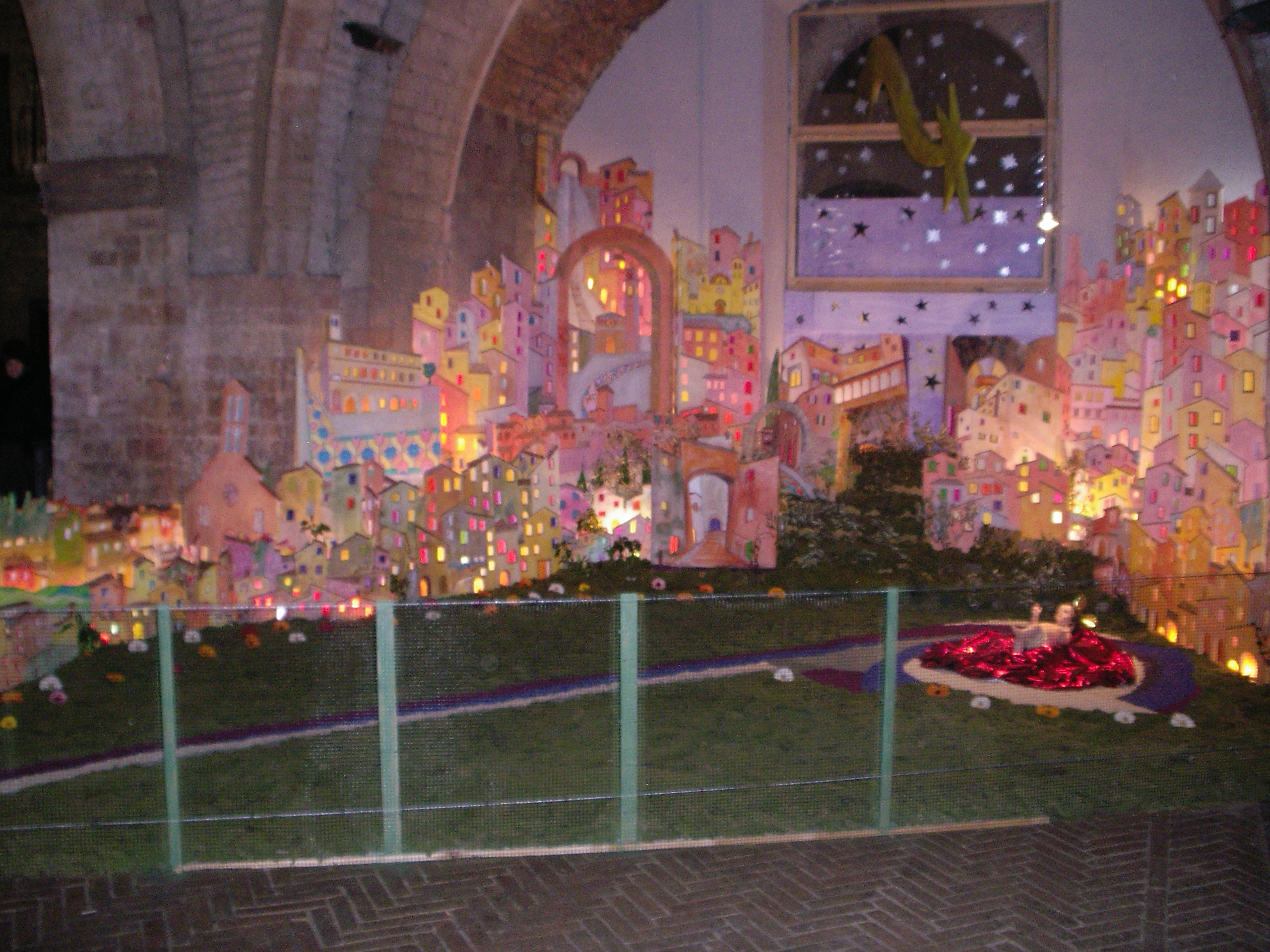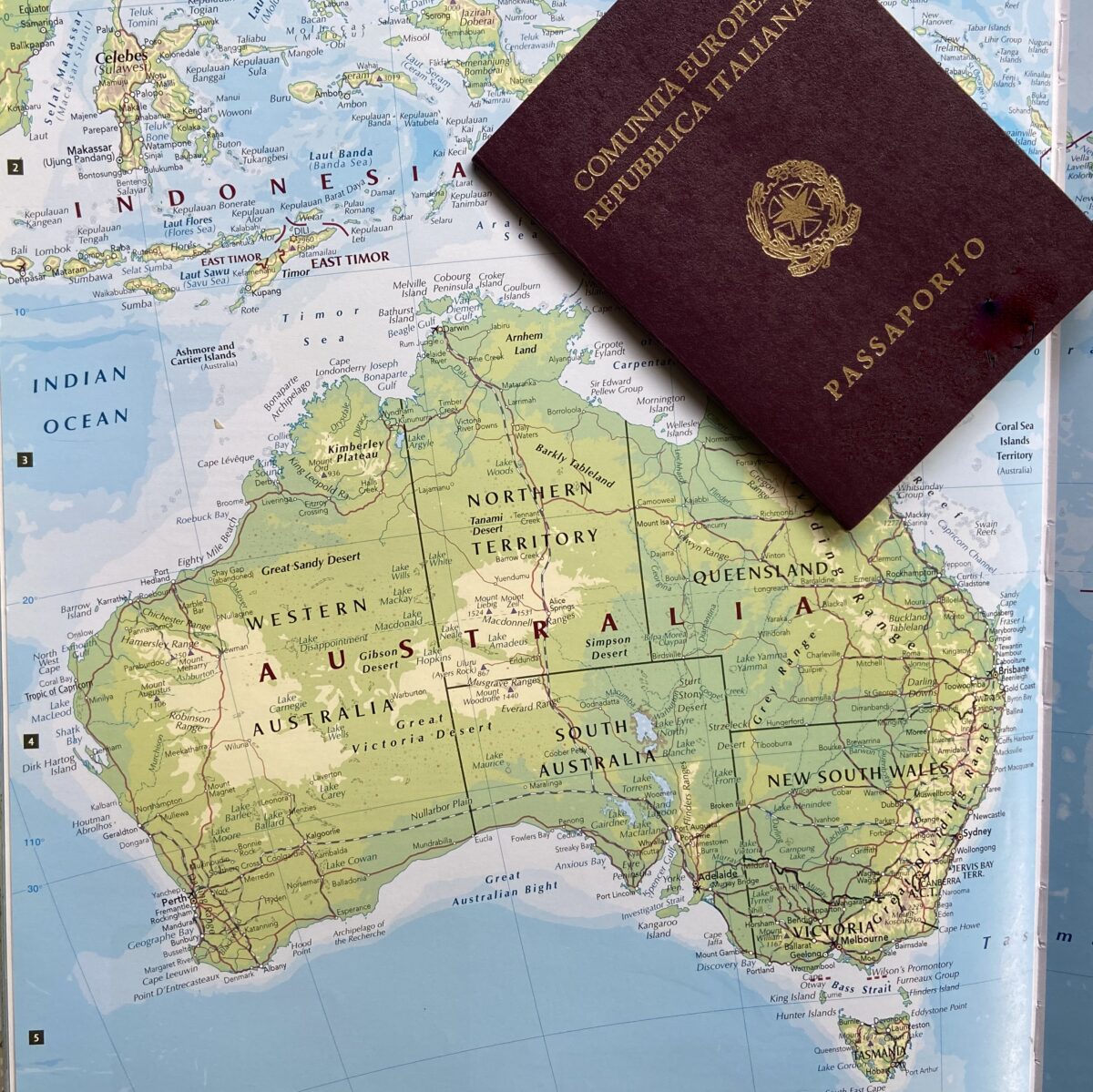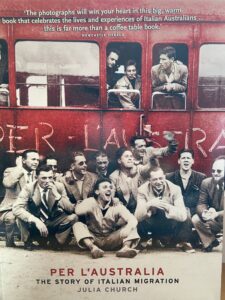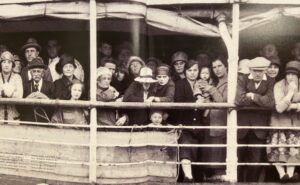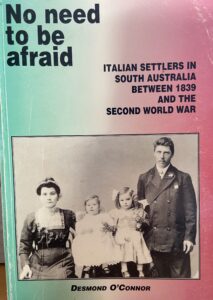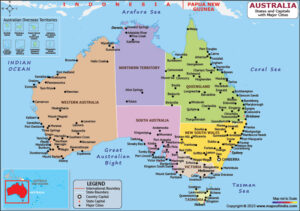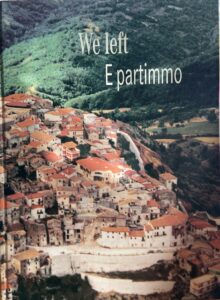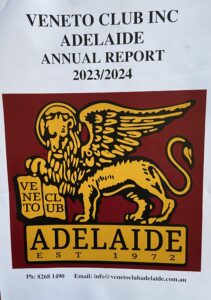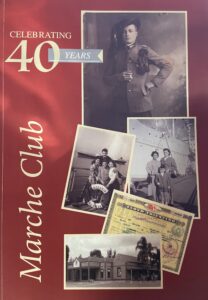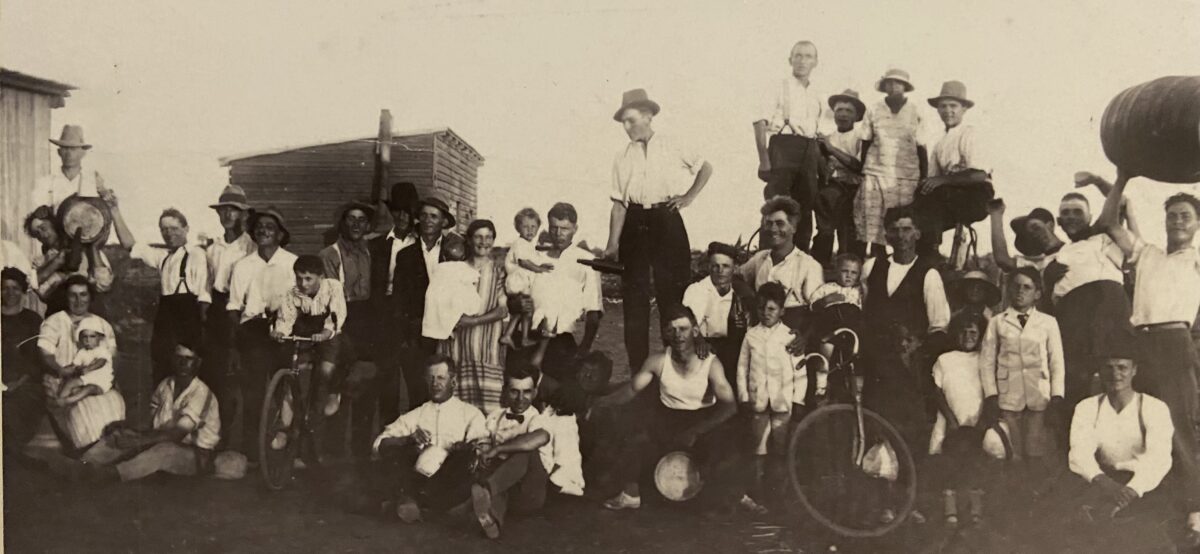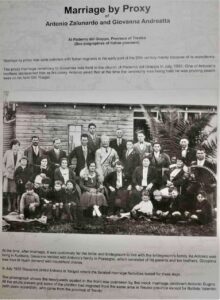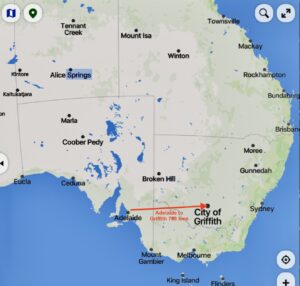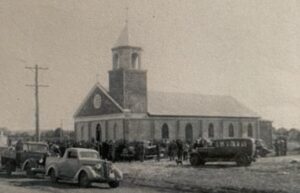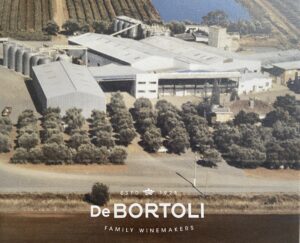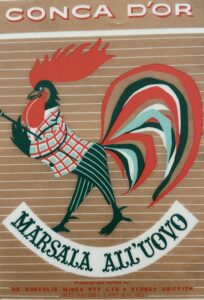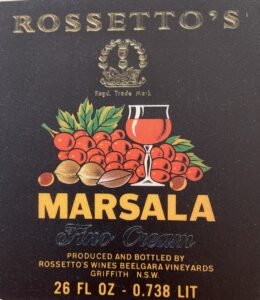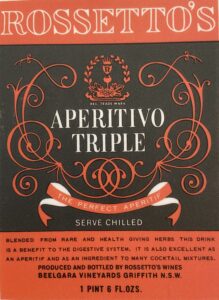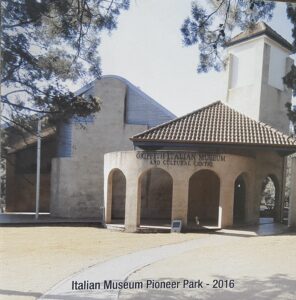We are in the season of Christmas and it’s a time to reflect on the meaning of this annual celebration.
The presepio or nativity scene in the image above was created by the local council in Spello, Italy, December 2017. Alex Bennett took the photo.
Many of us will remember Christmas family customs and rituals from our childhood. Some of these were brought to Australia from the first generation of the Veneto market gardeners and other groups of migrants.
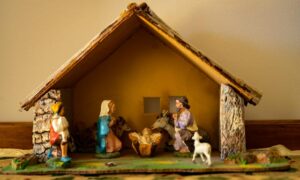
Some people have created Christmas traditions that grandchildren and great-grandchildren enjoy now. In this blog, you’ll read entries from past years that bring Christmas alive through memory, food and the creation of presepe or nativity scenes.
Presepe
The presepe are usually displayed in Italian homes and churches from 8th December, the feast of the Immaculate Conception, to 6th January, the feast of the Epiphany, when the wise men were usually added to the scene. Presepe are often displayed in piazzas, shops and other public areas. The figures can vary in scale from miniature to life size and in many families, preparations for the presepio begin a long time before it is displayed. In some villages, the local council holds competitions for the best presepio.
Irene Zampin who lives in Caselle di Altivole designs and creates her presepio each year and spends a lot of time planning and organising the scene for the nativity story, and usually begins her plans in October. Irene makes the various elements of the nativity scene – painstaking artistic work. It has become an important tradition for her family.
You can view the short video below that features the presepio Irene created last year.
Memories of creating a presepio in Bigolino
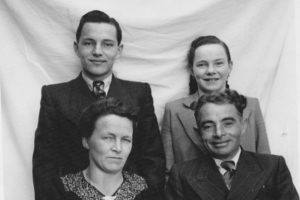
Back: Johnny and Maria Rosa
Front: Severina and Galliano
Adelaide, mid 1940s. Photo supplied by Maria Rosa.
Johnny Tormena, who was born in 1927, in Bigolino remembers the excitement of preparing the presepio as a child. He collected small amounts of money from selling clean bones to the rag and bone man in the village and used the proceed to buy figures during the year. Small shops in Bigolino sold the little statues and he started with just three: Mary, Joseph and the baby Jesus. Johnny set up the presepio in a corner of the kitchen and collected moss in the fields to make it look like grass and he used stalks of hay in the manger and made paths with fine gravel. During the year, he asked family members to save shoeboxes which he cut up to make houses and castles and he found coloured paper and into the shapes he created, he placed candles that illuminated the colours. It was a considerable project for a young boy to create the presepio.
When the Tormena family migrated to Australia in 1939, the figurines were included in the luggage and Johnny constructed the presepio for many years in Adelaide.
Family food traditions
Christine Rebellato nee Mattiazzo recalled family food traditions in her family:
Many Veneto families in Australia cook Baccalà at other times of the year, some on Good Friday or Christmas Eve or Christmas Day or other special occasions. Our family only ate the traditional Polenta e Baccalà on Easter Sunday.
There was one exception, Christmas 1990, a month before our mother Virginia died.
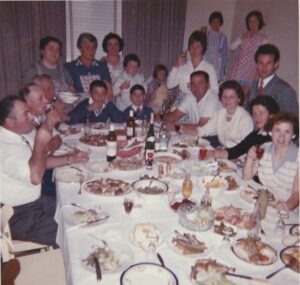
For that particular Christmas it was mum’s wish to cook up a feast, all under her direction. Mum wanted to have many traditional dishes, including Polenta e Baccalà. Mum directed and dictated the recipes to dad, and we cooked. We still have that special little notebook.
“Nonna Virginia’s Baccalà” recipe has been slightly modified over the 30 years we have been cooking it, without mum since 1991 and with dad until 2017. Mum’s recipe seems to be loosely based on Baccalà alla Vicentina.
Christine Rebellato nee Mattiazzo,12 December 2021
Christmas memories – from oral history interviews
Oscar Mattiazzo, Lina Campagnaro nee Ballestrin and Milva Rebuli nee Zampin spoke about childhood memories of Christmas in their oral history interviews

Oscar Mattiazzo, 13th April 2011
The only times that I remember something is when a friend of my father, who was my santalo, and he gave me a, well some, some, it’s like a cake, a round cake, you hang it around your neck or something – I can’t remember what they called it – and I thought I was king.
Lina Campagnaro, 13th March 2014
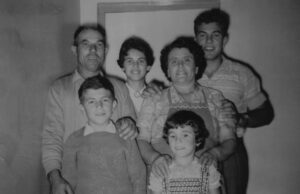
Photo supplied by Lina Campagnaro nee Ballestrin.
I remember most vividly … the Christmas tree because we had a big — pine tree out the front on Valetta Road and Dad would go and yeah, cut off a branch and Mum would or Dad would put it in a bucket full of sand and Mum would dress it up either with material … and then because there were not a lot of decorations, she would put up some balloons … it was always made out of either balloons and lollies and the most important thing were cherries when you could find them then, those double-stemmed cherries where you can just hang [on your ears]. And that was just a tradition my Mum had, and I carry on with now.
Milva Rebuli nee Zampin, 27 March 2016
We always had a nice Christmas … had our Christmas lunch … but it was all Italian, it wasn’t Australian, no roast turkey, it was always something special, Italian style.
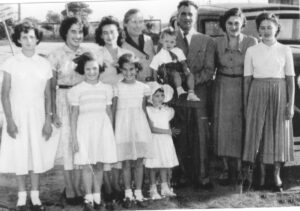
Peter is held by his father. Photo supplied by the Zampin family.
The generosity of market gardeners at Christmas

Aida Innocente’s parents had a half-case factory in Lockleys where they manufactured pine boxes that market gardeners used to sell their tomatoes and celery at market. In her blog in 2020, Aida recalled her father’s interactions with his clients at Christmas time.
My Dad had clients from all over Italy and other parts of Europe. As a child I remember these clients – Calabrians, Neapolitans, Bulgarians, Slavs, Greeks – dropping in to our home before Christmas to settle their accounts. Dad always made sure he had plenty of beer on hand. His clients brought fresh produce as gifts. I now look upon these Christmas visits as a great symbol of the meaning of Christmas – peace and harmony to people of all lands and faiths.
Aida Innocente – 3 May 2020
In a time marked by wars and unrest in the world, I am sure we all hope for peace and resolution. I wish you all a happy festive season with opportunities to spend time with your loved ones and make connections with relatives overseas.
Buon natale.
Madeleine Regan
16 December 2023
